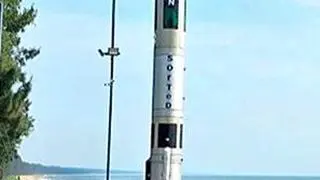With the next global climate conference (COP-27) barely 45 days away, there is heightened focus on how to avoid greenhouse gas emissions. Methane is a deadly greenhouse gas (though shorter-lived than carbon dioxide) and it is impossible to avoid production of methane altogether. For example, methane is produced in the oil industry when gas is flared.
One good way to neutralise the methane menace is to use the gas in applications where it is broken into its constituent elements. For this, we turn to an old industrial process — diamond coating.
One of the activities of the Materials Research Lab at IIT-Madras is to develop different technologies for coating surfaces with diamond to impart surface hardness, wear-resistance and lubrication properties for various applications. The developed technologies are commercialised by Kapindra Precision Engineering, a start-up incubated at IIT-Madras Research Park.
Prof MS Ramachandra Rao of the Department of Physics, IIT-M, told Quantum that the process of diamond coating surfaces is a good way of using methane harmlessly.
But first, a cautionary note — there is no diamond here. Nor is there a sparkle, for it is all black carbon. Diamond is just one of the avatars of carbon, like coal and graphite. They all differ in the manner in which carbon atoms are structured, which in turn comes from how the electrons are arranged (in sub-orbitals).
Therefore, all you need to get a diamond coat is some carbon. A good provider of carbon is methane, which is a molecule of one carbon atom attached to four hydrogen atoms. To separate carbon from this molecule you need extremely high energy. The machines used for coating materials (such as tools or auto components) feature several extremely thin tungsten filaments. When electricity is passed through the filaments they become very, very hot — 2,200 degrees C. If you push methane through these hot filaments, the gas breaks, step-by-step, into hydrogen and carbon. The carbon deposits on any substrate kept below the filaments, forming a diamond-hard coat.
Carbon exists with three types of electron bonds — sp1, sp2 and sp3. These refer to the regions where the electrons are most likely found in each orbit around the nucleus. Basically, sp2 is graphitic carbon, while sp3 is diamond.
When methane gas is passed through the ultra-hot filaments and the carbon and hydrogen split, the carbon comes in both sp2 and sp3 forms. However, some of the hydrogen (just divorced from carbon) still has an affinity for sp2 carbon — it reunites with sp2 carbon, leaving behind sp3 carbon, or diamond, which is coated on the surface. Interestingly, the process also yields some pure hydrogen.
Diamond coating, thus, presents an opportunity to use methane and produce hydrogen, too.
The machines used for diamond coating are imported, but IIT-M has got one indigenously produced, at a fraction of the import cost.











Comments
Comments have to be in English, and in full sentences. They cannot be abusive or personal. Please abide by our community guidelines for posting your comments.
We have migrated to a new commenting platform. If you are already a registered user of TheHindu Businessline and logged in, you may continue to engage with our articles. If you do not have an account please register and login to post comments. Users can access their older comments by logging into their accounts on Vuukle.